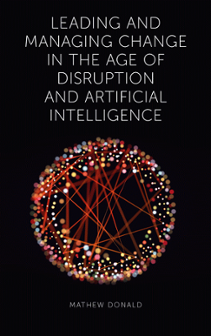
Index
Leading and Managing Change in the Age of Disruption and Artificial Intelligence
ISBN: 978-1-78756-368-1, eISBN: 978-1-78756-367-4
Publication date: 16 July 2019
Citation
Donald, M. (2019), "Index", Leading and Managing Change in the Age of Disruption and Artificial Intelligence, Emerald Publishing Limited, Leeds, pp. 193-198. https://doi.org/10.1108/978-1-78756-367-420191009
Publisher
:Emerald Publishing Limited
Copyright © 2019 Emerald Publishing Limited
INDEX
- Prelims
- Chapter 1 Introduction
- Chapter 2 Organisational Impacts from Disruption
- Chapter 3 Organisational Implications of Artificial Intelligence
- Chapter 4 Leading Organisations in the New Age
- Chapter 5 Managing Organisations of the Future
- Chapter 6 Organisational Implications
- Chapter 7 Organisational Change, Tools and Measures
- References
- Index